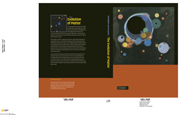Book contents
- Frontmatter
- Contents
- Introduction
- Part I The elements
- Part II Early solar system: nebula formation, evolution and lifetime
- Part III Accretion of the Earth
- Part IV Global evolution of the Earth
- 22 First look at the Earth
- 23 The plate-tectonic concept: some phenomenology
- 24 Ocean-ridge and island magmatism
- 25 Subduction and island-arc magmatism
- 26 Composition of the continental crust: magmatic, metamorphic and sedimentary processes
- 27 Isotopic records of the evolution of Earth's accessible reservoirs
- 28 Geochemical Earth model
- References
- Glossary
- Abbreviations
- Meteorites, rocks and minerals
- Index
25 - Subduction and island-arc magmatism
Published online by Cambridge University Press: 04 September 2009
- Frontmatter
- Contents
- Introduction
- Part I The elements
- Part II Early solar system: nebula formation, evolution and lifetime
- Part III Accretion of the Earth
- Part IV Global evolution of the Earth
- 22 First look at the Earth
- 23 The plate-tectonic concept: some phenomenology
- 24 Ocean-ridge and island magmatism
- 25 Subduction and island-arc magmatism
- 26 Composition of the continental crust: magmatic, metamorphic and sedimentary processes
- 27 Isotopic records of the evolution of Earth's accessible reservoirs
- 28 Geochemical Earth model
- References
- Glossary
- Abbreviations
- Meteorites, rocks and minerals
- Index
Summary
Introduction: subduction, associated processes and the crucial role of water
The subduction factory reworks a huge amount of material, similar to that involved in ridge magmatism, and it redistributes trace elements in uniquely fractionated relative abundances between three principal terrestrial reservoirs, the mantle, the continental crust and the oceans.
The bulk present-day mass flux of subducted material is impressive, ∼1018 g yr−1, of which sedimentary (mainly terrigenous) and basaltic subfluxes contribute 1.3 × 1015 g yr−1 and 6.7 × 1016 g yr−1 respectively and the remainder is material of the subcrustal lithospheric mantle (Crisp, 1984; Veizer and Jansen, 1985; Rea and Ruff, 1996; Plank and Langmuir, 1998).
On its way to a convergent boundary, the oceanic plate is cooled and becomes thicker as the lithosphere freezes onto its base. The pre-subducted oceanic plate thus consists of several rock types: sediments highly enriched in certain trace elements, basaltic crust, gabbros and peridotites. The intense water flux through the ocean floor (∼ 1017 g yr−1) alters all these rocks (particularly the basalts), which then carry specific ocean-related chemical and isotopic signatures, and it also changes the sea-water chemistry via the delivery of mantle-derived elements into the ocean (Fig. 27.20; Staudigel, 2003).
Subduction occurs at the convergent boundaries where plates collide (Fig. 23.2). When approaching the collision zone, the stresses applied to the cold rigid plate cause its faulting and bending and its movement downward, generating a deep trench between the subducting and overriding plates.
- Type
- Chapter
- Information
- The Evolution of MatterFrom the Big Bang to the Present Day, pp. 321 - 343Publisher: Cambridge University PressPrint publication year: 2008



